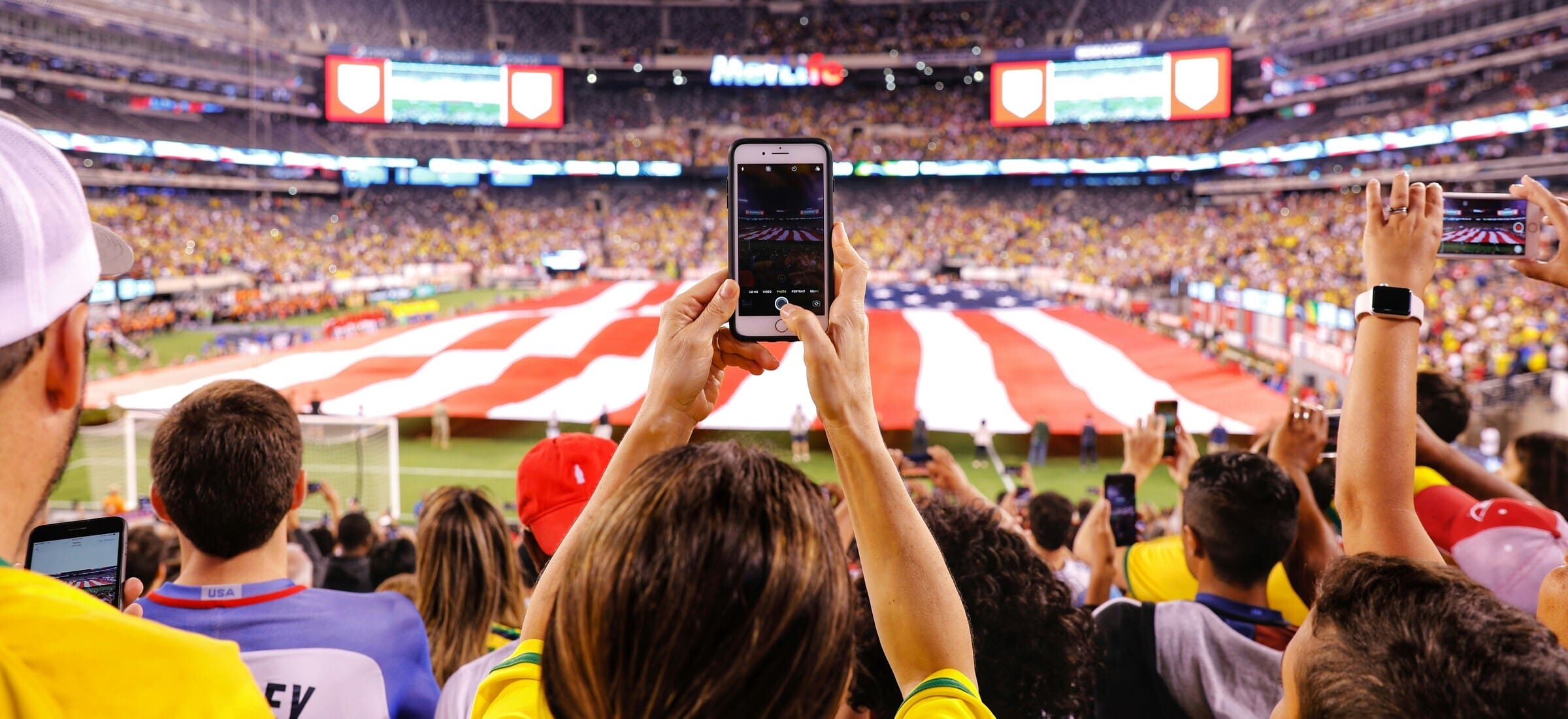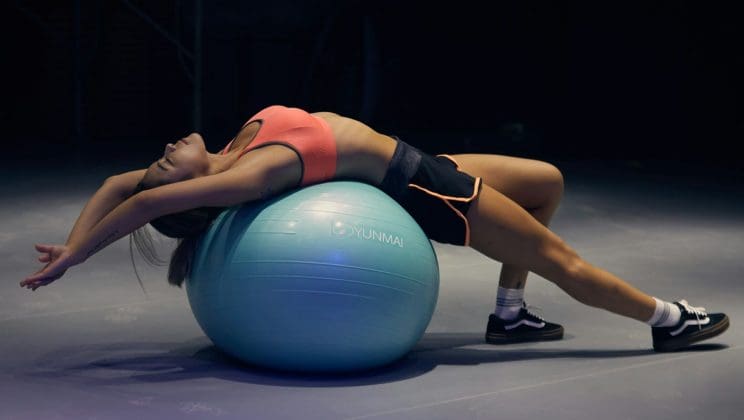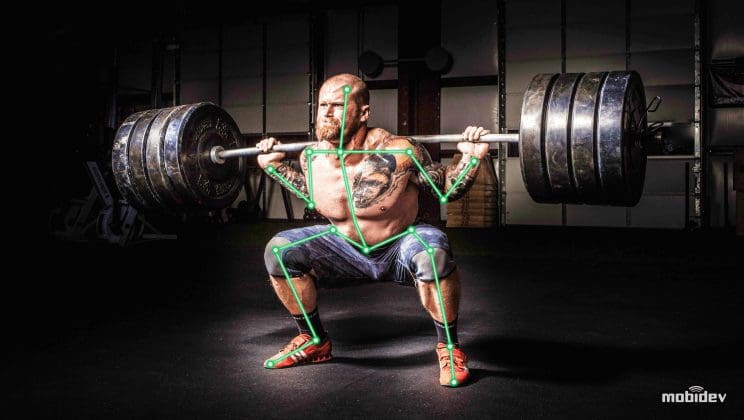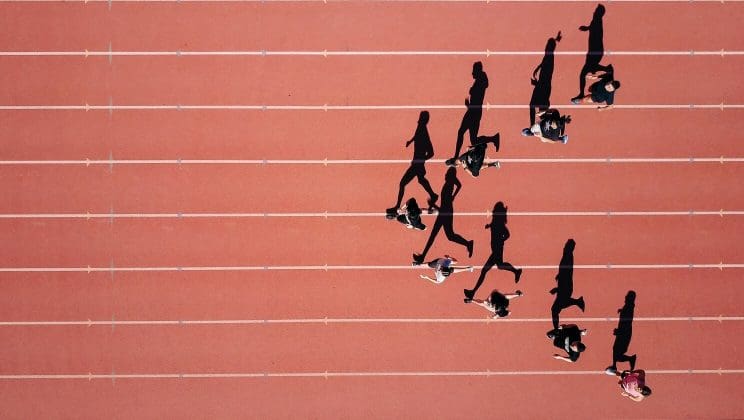Sports tech industry is a home for innovative and cutting edge approaches to increase athlete performance, prevent injuries, engage audiences, and improve overall experience from professional sports events. MobiDev is taking its part in developing innovative technology for the sports industry, as we’ve been working with professional sports organizations since 2019. And we’ve seen how rapidly the market has changed with the popularity of machine learning, augmented reality, smart wearables and other technologies.
All of these approaches change the way organizations treat athlete preparation, manage sports teams and analyze on field and off field activities. Here, we’ll take a look at the recent trends shaping the world of sports, and what you can extract for your own product development from these cases.
Trend 1: AI coaching bot
Computer vision is a transformative technology for sports apps, offering real-time analysis and immediate insights into user movements. With the introduction of human pose estimation, the limitations for tracking human movements became less of an issue. As those computer vision models can achieve accurate perception of a movement pattern in a 3D space, and doesn’t require any wearables to be used.
Coaches can leverage this capability to dissect player techniques, identify strengths and weaknesses, and provide targeted feedback for improvement. Moreover, it can be used by average users on their own – to prevent injury by detecting mistakes in doing exercises and irregularities in form or posture during training and rehabilitation.
Also, the objective performance metrics generated by computer vision eliminate subjectivity, providing accurate data crucial for training strategies and game plans. This approach is actively implemented to create systems that can provide professional athletes with accurate feedback on the performed movement, and support with corrective feedback and analytical summaries for longer sessions. MobiDev has been involved in a project related to automating training procedures using human pose estimation. BeOne Sports is a live example of what can be called an AI coaching bot, as it provides access to the feedback of professional athletes within your smartphone. Check our video about how BeOne Sports created its product and how the organization succeeded on the market of sports applications:
So if you are wondering how difficult it is to implement human pose estimation, what are the development timelines and how to achieve similar results with computer vision, check our dedicated article on HPE in AI coach applications.
Want to Know More About AI Training Applications?
Study Our Experience With Human Pose Estimation Technology
Read The ArticleTrend 2: Wearable tech and performance analytics
Sports analytics algorithms play a pivotal role in computing user input to analyze different aspects of sports performance, training, sleep/rest balance, and achievements. Various devices are used in today’s sports to collect data and process it using AI. Wearable devices designed to gather information of general health indicators, physiological parameters, and performance analysis right during the game have become a wide-spread thing among sports organizations.
As the 2023 research by the University of Calgary suggests: “AI applications have the potential to enhance traditional sports performance analysis methodologies. It has enabled video analysis to become faster, more precise, and comprehensive, supplanting time-consuming and potentially biased manual reviews.” The technological base for such systems involves different methods of computer vision paired with analytical algorithms meant to collect and process data about player performance. These can be either individual players or sports teams, and their interactions during the game.
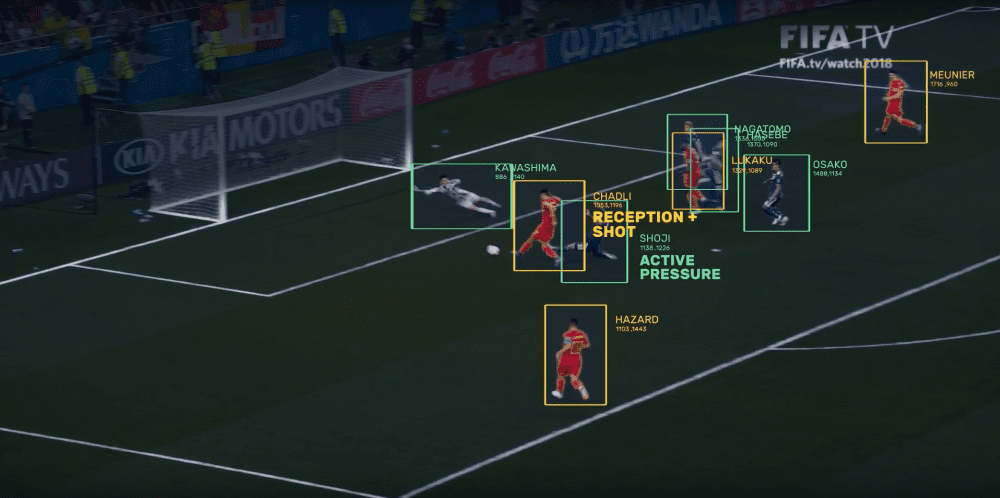
SPORTLOGiQ system analyzing Fifa world cup match
Such systems are often integrated into sports analytics platforms and apps, enabling athletes and coaches to make data-driven decisions, optimize training strategies, and enhance overall performance and well-being. For instance, PlaySight developed a solution that utilizes optical sensors to observe the training court and recognize the actions automatically.
The underlying ecosystem includes numerous types of sensors and software components that analyze the reasons for received injuries, or help to take data-driven decisions since such systems are meant to monitor millions of data points per game. The data entry point is not limited to just images, as other types of sensors are widely used, like Google’s Jacquard insole tracker for football. IoT devices, accelerometers, pressure sensors, gyroscopes and other approaches are all becoming increasingly popular, and are here to stay in the future.
NEED CONSULTATION WITH A TECH EXPERT?
Receive Proper Consultancy on What to Do with Your Specific Project Idea
Contact usTrend 3: Immersive broadcasting with AR
Sports broadcasting is one of three main sources of income for sports organizations. The previous years with COVID interrupting sports events, and shortening the attention span brought by TikTok imposed a problem for broadcasters of long games. People spend less time watching the event. But as the popularity of AR and VR grows, sports might get their attention back.
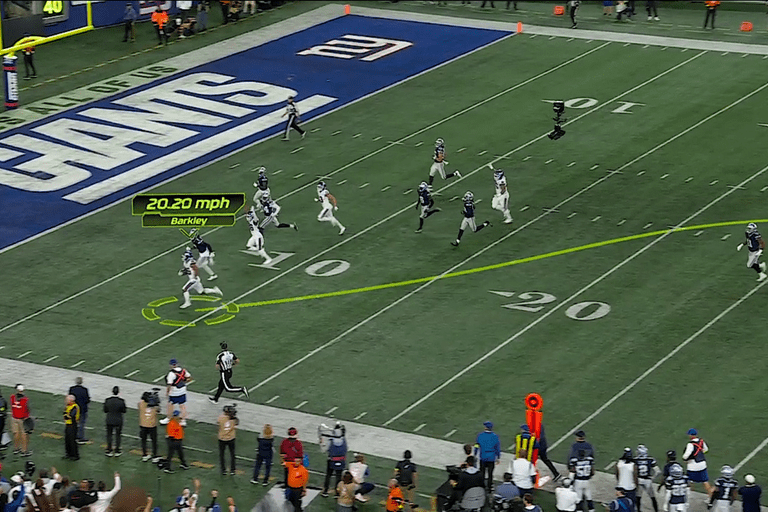
ESPN AR powered broadcasting
In 2023, Apple and Walt Disney Co announced their mutual work on integrating Apple Vision Pro into a broadcasting experience in augmented reality. Making it available to watch up to 5 different games at once, allowing for picture-in-picture features and on-screen stats. MetaQuest VR headset launched a fairly similar feature called Xtadium. However, the use of augmented reality to watch games from different angles of a stadium and scroll through statistics in real-time is not limited to just that.
Investigating VR Headset Applications?
Learn About App Development Strategies for Apple Vision Pro
Go to the guideFor example, ESPN, an American broadcaster implemented an AR application that helps viewers to visualize data collected during the match. Putting virtual overlays helps to navigate through the game quicker and boosts viewers engagement. But more importantly, it opens up new perspectives of AR application development for startups that operate in the sports industry.
Trend 4: Video assistant referees
As video assistant referees (VAR) have been around for some time, and there are protocols to use such systems in sports, we can say for sure this trend is here to stay for the upcoming years. These tools rely on video recordings to analyze in-game situations and provide unbiased opinion on whether there was an out in a football match, or if a penalty is needed.
Video assistant referees are already used in F1 car racing and other sports, bringing down the cost of judging the game. As artificial intelligence is fully capable of understanding the rules of sports and analyzing on-field events. But more importantly, VAR plays a crucial role in making unbiased decisions, since hot debates over the referee decisions are a long-standing part of any sport.
An automated system based on AI will help not only make the right decision during a sports competition but also instantly and convincingly visualize it for teams and fans, preventing stress and disputes. However, the requirements to implement VAR are very high, because the decision provided by the system determines the fate of each match. All in all, VAR comes as a part of data analytics and visualization that are explicitly used in sports, and the number of use cases is only growing since AI algorithms become more accessible and accurate.
Trend 5: Digital injury prevention
Injury prevention with AI, became a thing since NFL and AWS announced their partnership to develop Digital Athlete. This is a groundbreaking technology that uses various sensors across a player’s protective suit, to collect data and create a virtual representation of NFL players to predict possible injuries.
Similar systems emerge in different types of sports, for example there are rumors NBA is also trying to implement injury prevention using data analysis and wearable sensors. Which means the concept of aggregating biomechanical, physiological and general health data will continue to evolve in big sports, and possibly come down to amateur sports as well. With that, a separate type of system is growing on the market.
Rehabilitation after injuries sometimes can take months, or even years of consistent and controlled exercising. Professional athletes usually have highly skilled physiotherapy or rehab specialists on their side. However, this may not be the case for amateur athletes that don’t have sponsorship.
These applications apply similar principles to AI-based coaches, using human pose estimation and computer vision to track specific motion and provide feedback. Rehab applications assist individuals in proper injury treatment and recovery, by either showing a set of exercises and proper technique for them, or by controlling the execution by giving biomechanic corrections to the user.
Trend 6: Data-driven talent scouting
The process of identifying and evaluating talent for hiring players to the team can be a subject of long discussion. AI has been around for years in human resource and talent acquisition supporting businesses with data to search for candidates that suit given job positions the most. However, unlike recommendation systems for job candidates, the sports industry requires in depth analysis of in game performance to make an informed decision.
The part of decision making here falls on collecting and analyzing actual player performance metrics. Which applies using computer vision to process on-field player performance and break this analysis into clear visualizations. Another part of the process is comparing the players between each other.
Major sports associations like NBA, NHL, or MLB integrate these systems to process their own data and make scouting/recruitment decisions data driven. However, the use of such systems is not limited to just professional sports as there are cases of systems like one developed by SparkCognition. The created recruitment system helps universities evaluate student applications based on their sports performance, recommendations and even grades. Which means, obtained data and groundworks in computer vision will push further AI-decision making in recruitment.
Want To Create Your AI-Driven Sports App?
Leverage Our Expertise and Development Resources
Contact usTrend 7: Virtual reality and game simulations
When we talk about sports, there are a lot of complex training scenarios that are difficult to replicate without a realistic setting, however they still remain vital to learn new strategies and tactical approaches. Virtual reality gained a significant popularity with a range of headsets introduced on the market, and sports training is no exception for using simulations.
Back in 2015, NFL explored how VR can be used for training purposes for college students using digital playgrounds. Today, similar systems are integrated into consumer-level devices like MetaQuest VR headsets, with Pro Era being an example of how American football players can benefit from game simulation using real-time NFL data. Such applications are primarily targeted at simulating quarterback gameplay, however the development shows that this approach is scaled to other team roles and kinds of sport.
How to make use of sports market trends?
The engine of nowadays sports tech progress is focused around artificial intelligence and augmented reality. As the power of data processing with machine learning, and transformation of the available data is accessible as never before. And we can see their massive integration into major sports organizations that rely on it in decision making, marketing, entertainment, and team management processes. The lower level of applications meant for coaching, developing tactics and strategies during the game is also making strides as the amount of training data is growing.
If you want to unlock the full potential of new technology in sports and consider it as a promising investment, the MobiDev team will assist you in developing your product for the sports industry and provide all its tech and business expertise in the domain.
